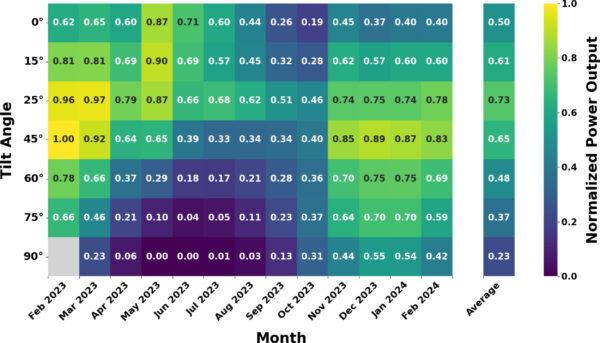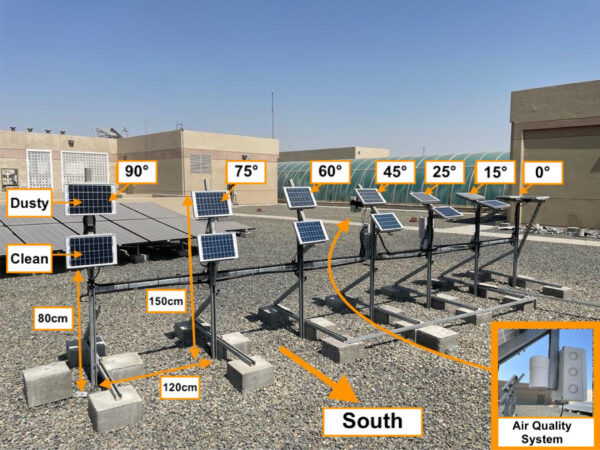Scientists have measured the performance of PV modules under strong soiling conditions in Saudi Arabia and have identified the most suitable tilt angles for improving power generation. They have also found that a key role is played by rain intensity, dust, sandstorms, and cloud cover.
A research group comprising scientists from Saudi Arabia and the United Kingdom has conducted a year-long experiment to analyze the impact of dust and the tilt angle of PV performance in a desert environment and has found that rain intensity, dust, sandstorms, and cloud cover play a key role in solar module performance.
“Jeddah is one of the world’s worst soiling accumulation zones, namely the Middle East and North Africa (MENA) region and Central Asia,” the group explained. “The city is characterized by a desert environment with high temperatures, low precipitation, drought conditions, and winds that cause dust and sandstorms.”
The experimental setup included seven pairs of PV modules installed in Jeddah City at angles of 0◦, 15◦, 25◦, 45◦, 60◦, 75◦, and 90◦. One panel in each pair was cleaned daily, while the other accumulated dust throughout the year.
During the 12-month test period, the PV module’s performance was monitored and recorded on a minute basis. In addition, an air quality monitoring system measured airborne particulate matter (PM), enabling the correlation between dust events and performance variations. For a more in-depth analysis, the team has also marked periods of light rain, dust storms, heavy rain, long-term dust accumulation, and cloudy days.
The PV panels were based on polycrystalline cells and had each a nominal power of 10 W. All panels were facing south on 150 cm poles. The cleaned panels were installed at a height of 80 cm, while the dusty ones were installed above it. A distance of 120 cm was kept between each pair of tilted panels. The 90◦ angle modules experienced technical issues, leading to partial elimination of them from the analysis.

Image: Taif University, Solar Energy, CC BY 4.0
“The findings revealed that dust accumulation significantly reduces power output, with a reduction of up to 80.4% observed after 183 days without rain for a module at a 0◦ angle,” the group said. “Rain significantly helped clean the PV modules by removing dirt accumulation naturally, especially on those at steeper angles. However, lower rainfall intensities (<1 mm/day) increased dust buildup and adhesion, causing cementation on the module at 0◦ angle.”

Image: Taif University, Solar Energy, CC BY 4.0
More per the results, throughout the year, the 25◦ was able to keep the best results with dust, with a median production of 4.76 W. That represents a normalized power output of 0.73 throughout the 12-month period. 0◦, 15◦, 45◦, 60◦, 75◦, and 90◦ were able to produce 0.5, 0.61, 0.65. 0.48, 0.37 and 0.23, respectively. The 25◦ also kept the lead in the dry period, with a median power output of 4.28 W. On the other hand, in the rainy period, the 45◦ panels have proved the best performances, with a median output of 6.05 W.
“The study highlighted the critical role of environmental factors, such as rain intensity, dust, sandstorms, and cloud cover, on the PV module’s performance,” the team concluded. “By identifying the optimal tilt and understanding the environmental patterns, this research provided valuable guidelines for enhancing the efficiency and longevity of solar panel installations in desert environments.”
The results were presented in “Impact of dust and tilt angle on the photovoltaic performance in a desert environment,” published in Solar Energy. Scientists from Saudi Arabia’s Taif University, King Abdulaziz, and the United Kingdom’s University of Southampton have conducted the study.
